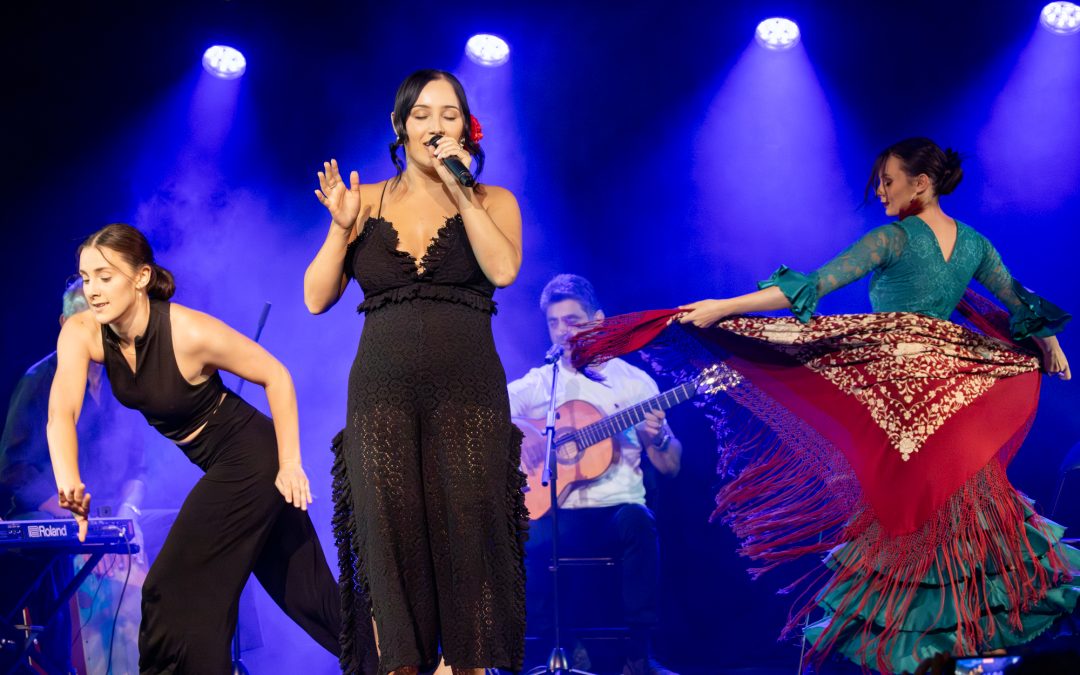Flamenco House music is the evolution of Flamenco Chill (popular in the late 80s and 90s) that combines elements of Flamenco Music with that of Electronic hence creating Electro-Flamenco
Flamenco House Music or as it’s also known Electro-Flamenco is a genre of electronica derived from modern House Music and Flamenco Guitar that is being evolved by Australian Flamenco Guitarist Mike Rizk
It contains traditional elements of Flamenco pop as popularized by groups such as Gypsy Kings with a good dose of House Music added which as a result creates a modern electronic Flamenco feel
Mikes version of Flamenco House Music attempts to maintain the richness of Flamenco guitar lead, rhythms and beats where other past and current styles of House seem to only contain elements of Flamenco lead guitar.
Although derived from Flamenco Chill music from the 80s and 90s, Flamenco House still has its roots embedded with traditional Flamenco pop using a combination of Flamenco rhythm and lead with elements of House added, it also makes good use of technological gains that weren’t available back then
Mike believes the Flamenco House genre to be part of the evolution and modernization of Flamenco pop using electronica as played by Gypsy Kings, Ottmar Liebert to name a few
Incorporating House Music and Flamenco was derived through my love and passion of Flamenco Guitar and House Music and what seems to be a lack of options in this era for this style of music
Therefore with over 20 years of Flamenco mastery I thought it was about time to combine the two to create and expand on this relatively ‘new genre’
Over time I’ll expect this genre to evolve using other forms of electronica and perhaps further contribute to the modernization of Flamenco pop.
It will never replace traditional Flamenco guitar and why should it, however it may help a new style further evolve
Latest Flamenco House Tracks
Flamenco Music
Flamenco (Spanish pronunciation: [flaˈmeŋko]), in its strictest sense, is an art form based on the various folkloric music traditions of southern Spain in the autonomous community of Andalusia and Murcia. In a wider sense, the term is used to refer to a variety of Spanish musical styles. The oldest record of flamenco music dates to 1774 in the book Las Cartas Marruecas by José Cadalso (Akombo 2016, 240–241). Flamenco has been influenced by and associated with the Romani people in Spain; however, its origin and style are uniquely Andalusian (Hayes 2009, 31–37) and Flamenco artists have historically included Spaniards of both Romani and Non-Romani heritage.
Manuel Ríos Ruiz notes that the development of flamenco is well documented: “the theatre movement of sainetes (one-act plays) and tonadillas, popular song books and song sheets, customs, studies of dances, and toques, perfection, newspapers, graphic documents in paintings and engravings….in continuous evolution together with rhythm, the poetic stanzas, and the ambiance” (Ríos Ruiz 1997,[page needed]).
Nevertheless, the exact origin of flamenco is unknown and the subject of many hypotheses. The most widespread is that flamenco was developed through the cross-cultural interchange between moriscos and gitanos (Romani people of Spain) during the sixteenth century specifically in East Andalusia (Machin-Autenrieth 2015, 29); the Diccionario de la lengua española (Dictionary of the Spanish Language) primarily attributes the creation of the style directly to the Spanish Romani (Real Academia Española 2019, sense 4).
House Music
House is a genre of electronic dance music characterized by a repetitive four-on-the-floor beat and a tempo of 120 to 130 beats per minute.[9] It was created by DJs and music producers from Chicago’s underground club culture in the 1980s, as DJs from the subculture began altering disco songs to give them a more mechanical beat and deeper basslines.[1]
The genre was pioneered by DJs and producers mainly from Chicago and New York such as Frankie Knuckles, Larry Levan, Ron Hardy, Jesse Saunders, Chip E., Steve “Silk” Hurley, Mr. Lee, Farley “Jackmaster” Funk, Marshall Jefferson, Phuture and others. From its beginnings in the Chicago club and local radio scene, the genre expanded internationally to London, then to other American cities such as New York City and Detroit before becoming a worldwide phenomenon.[10]
House has had a large impact on pop music, especially dance music. It was incorporated by major pop artists including Janet Jackson, Madonna and Kylie Minogue, but also produced some mainstream hits on its own, such as “French Kiss” by Lil Louis (1989), “Show Me Love” by Robin S. (1992) or “Push the Feeling On” by Nightcrawlers (1992/1995). Many house producers also did and continue to do remixes for pop artists. Until today, house music has remained popular on radio and in clubs while retaining a foothold on the underground scenes across the globe.
